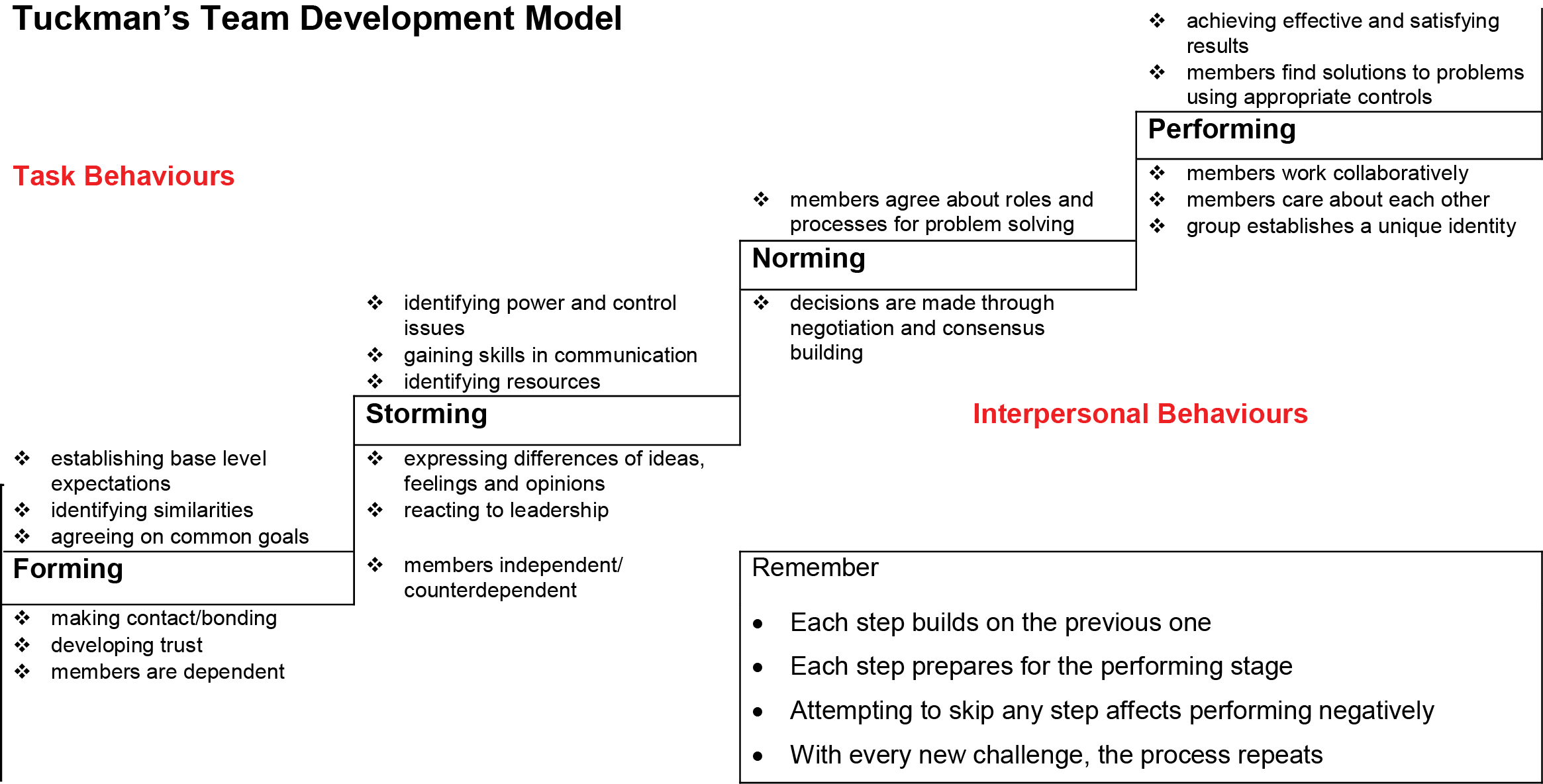9 Plan for Successful Teamwork
Tuckman suggested that teams move through stages in their life cycle: forming, storming, norming, and performing. At each stage, the group will work through a series of interpersonal tasks as well as a series of project-related tasks.

In the first section of this module, you explored the components of a Community of Inquiry. Both cognitive presence and social presence are required in the online learning community. Tuckman’s model of team development also indicates that both components are needed. In a class-based team, it may be easy to focus only on the cognitive output of the group – the creation of the project, paper, or presentation. However, as you can observe from Tuckman’s model, a well-functioning team requires its members to exhibit social presence throughout, communicating well in interpersonal interactions.
Consider the strategies you plan to use to demonstrate social presence and form a strong interpersonal foundation for your newly forming team.
- Tuckman, B.W. (1965) ‘Developmental sequence in small groups’, Psychological Bulletin, 63, 384-399. Reprinted in Group Facilitation: A Research and Applications Journal ,Number 3, Spring 2001 ↵

